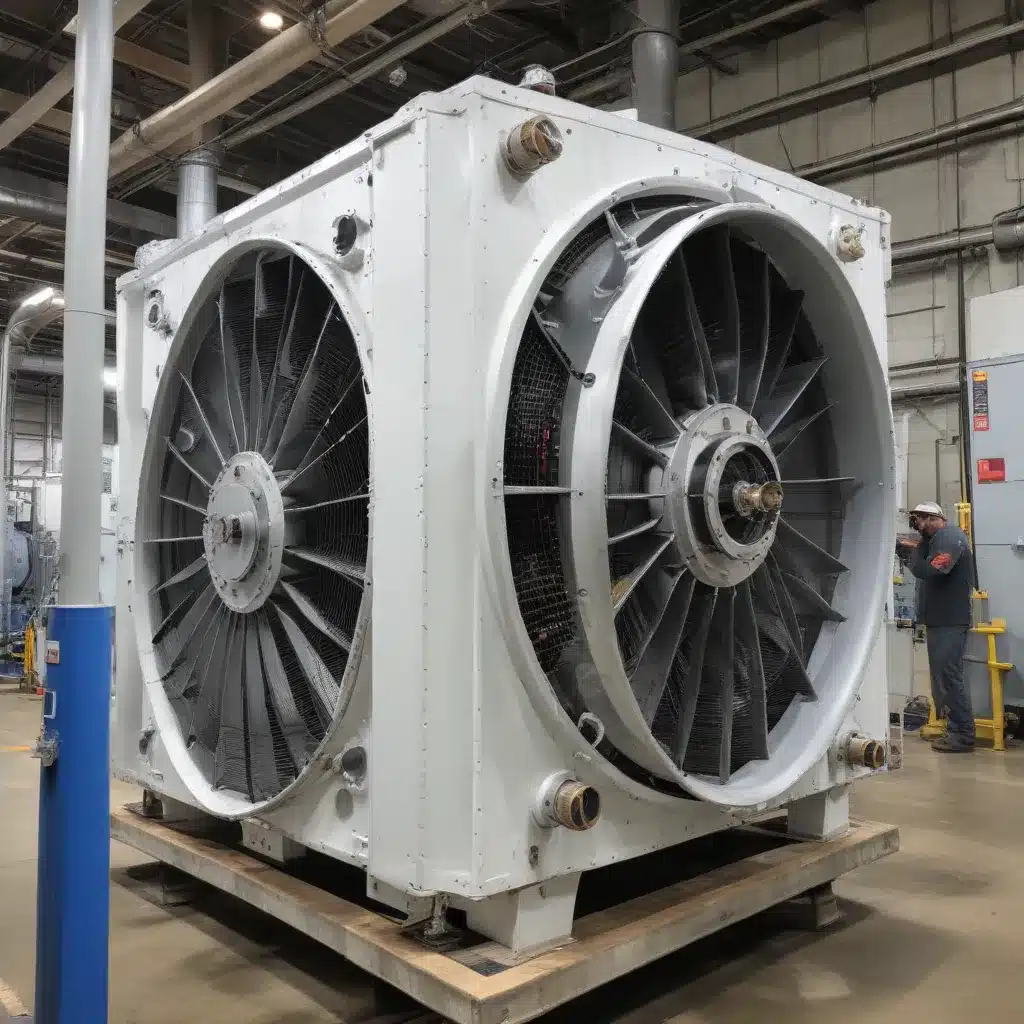
Unlocking the Secrets to Extending the Lifespan and Efficiency of Air-Cooled Heat Exchangers
Air-cooled heat exchangers are the backbone of various industrial processes, from HVAC systems and refrigeration to power generation and chemical manufacturing. As these critical components face the relentless demands of harsh operating environments, maintaining their optimal performance and longevity becomes paramount. In this comprehensive guide, we delve into the pioneering maintenance strategies that can elevate the reliability, energy efficiency, and service life of air-cooled heat exchangers.
Mastering the Art of Preventive Maintenance
Proactive maintenance is the cornerstone of air-cooled heat exchanger longevity. By implementing a well-structured preventive maintenance program, you can significantly reduce the risk of unexpected breakdowns and ensure consistent, high-performance operation.
One of the key aspects of preventive maintenance is regular inspections. Scheduled visual inspections can identify potential issues like fouling, corrosion, or mechanical damage before they escalate. Coupling these inspections with detailed cleaning routines, such as chemical treatment or high-pressure water washing, helps maintain optimal heat transfer and airflow across the heat exchanger’s surfaces.
Lubricating moving parts, like fan bearings and motors, is another crucial preventive maintenance task. Proper lubrication not only reduces wear and tear but also minimizes energy consumption by ensuring smooth, efficient operation. Leveraging predictive maintenance techniques, such as vibration analysis or thermography, can help determine the optimal lubrication intervals and identify impending failures before they occur.
Optimizing Heat Exchanger Design for Enhanced Reliability
The design of an air-cooled heat exchanger plays a pivotal role in its long-term performance and reliability. By incorporating the latest advancements in thermal engineering and materials science, you can engineer heat exchangers that are more resilient to the challenges posed by harsh operating conditions.
Innovative fin and tube configurations, for instance, can improve heat transfer efficiency while reducing the risk of fouling and corrosion. The Bullitt Center, a renowned example of sustainable architecture, has seamlessly integrated advanced solar photovoltaic systems into its rooftop design, showcasing the potential for renewable energy integration in building applications.
Additionally, the selection of high-quality, corrosion-resistant materials, such as stainless steel or specialized coatings, can significantly extend the service life of air-cooled heat exchangers. These enhancements not only improve reliability but also contribute to enhanced energy efficiency by maintaining optimal heat transfer capabilities over the long term.
Embracing Intelligent Monitoring and Predictive Maintenance
As the digital transformation continues to shape industrial operations, integrating intelligent monitoring and predictive maintenance strategies can revolutionize the way we manage air-cooled heat exchangers.
By deploying advanced sensors and data analytics, you can continuously monitor critical parameters like pressure, temperature, vibration, and fouling levels. This real-time data, combined with machine learning algorithms, enables predictive maintenance models that can forecast potential failures and recommend optimal maintenance schedules.
For instance, the Bahrain World Trade Center, a pioneering example of wind-integrated architecture, has strategically positioned wind turbines between its twin towers to harness the power of coastal wind patterns. This innovative design not only generates renewable energy but also showcases the potential for intelligent monitoring and control systems to enhance the reliability and performance of building-integrated renewable energy systems.
Optimizing Energy Efficiency through Innovative Strategies
Maintaining the energy efficiency of air-cooled heat exchangers is not only crucial for operational cost savings but also aligns with the growing global emphasis on sustainability and environmental responsibility.
One effective strategy is to optimize the airflow and heat transfer characteristics of the heat exchanger through innovative fin designs and fan configurations. By reducing pressure drops and enhancing airside heat transfer coefficients, you can minimize the energy required for fan operation, contributing to significant energy savings.
Integrating renewable energy sources, such as solar photovoltaic systems or wind turbines, into the design of air-cooled heat exchangers can further enhance their environmental performance. The Bullitt Center, for instance, has leveraged its rooftop solar panels to achieve net-zero energy status, setting a new benchmark for sustainable building design.
Adapting to Industry-Specific Challenges
Air-cooled heat exchangers are employed across diverse industries, each with its unique set of operational challenges. Developing maintenance strategies that address these industry-specific requirements is crucial for ensuring optimal performance and longevity.
In the power generation sector, for example, air-cooled heat exchangers play a vital role in cooling turbine exhaust and other process streams. Here, ensuring reliable operation during extreme weather conditions and minimizing downtime is paramount. Implementing robust corrosion-resistant coatings, regularly inspecting critical components, and incorporating predictive maintenance techniques can help mitigate these challenges.
In the chemical and petrochemical industries, air-cooled heat exchangers are often exposed to highly corrosive and fouling environments. Employing advanced materials, such as titanium or specialized alloys, and deploying effective cleaning methods, including online chemical cleaning or automated soot blowing, can significantly enhance the service life of these critical components.
Fostering a Culture of Continuous Improvement
Maintaining the peak performance and longevity of air-cooled heat exchangers is an ongoing journey, requiring a culture of continuous improvement within your organization. Regularly reviewing and updating maintenance protocols, incorporating the latest technological advancements, and fostering cross-functional collaboration can all contribute to optimizing the lifecycle of these essential assets.
Engaging with industry experts, participating in knowledge-sharing forums, and actively monitoring the latest trends and innovations in the field of air-cooled heat exchanger technology can help you stay ahead of the curve. By embracing a continuous improvement mindset, you can ensure that your air-cooled heat exchangers continue to deliver reliable, energy-efficient performance for years to come.
Visit Air Cooled Heat Exchangers to explore more insights and practical solutions for enhancing the longevity, reliability, and energy performance of your air-cooled heat exchangers.

